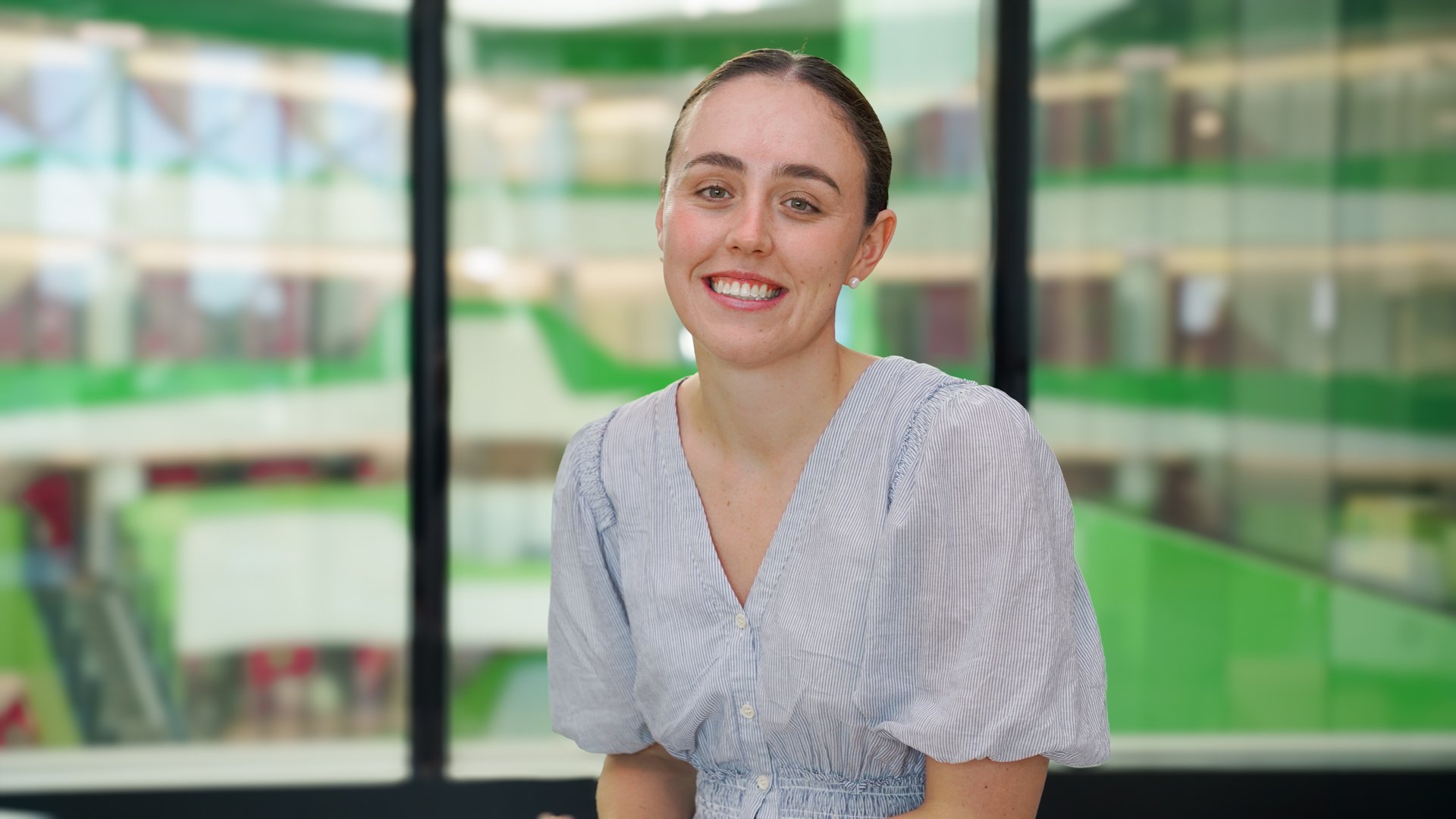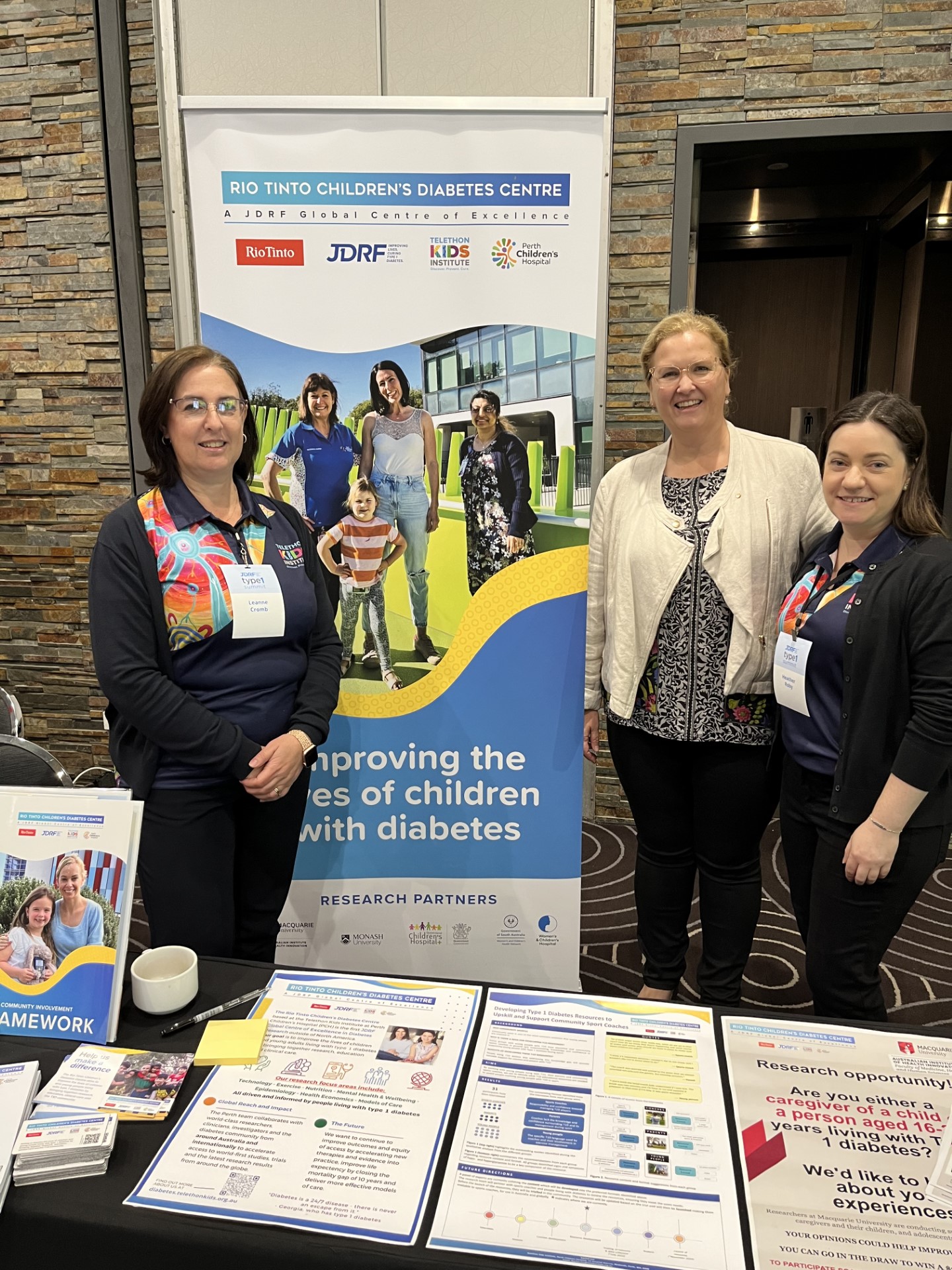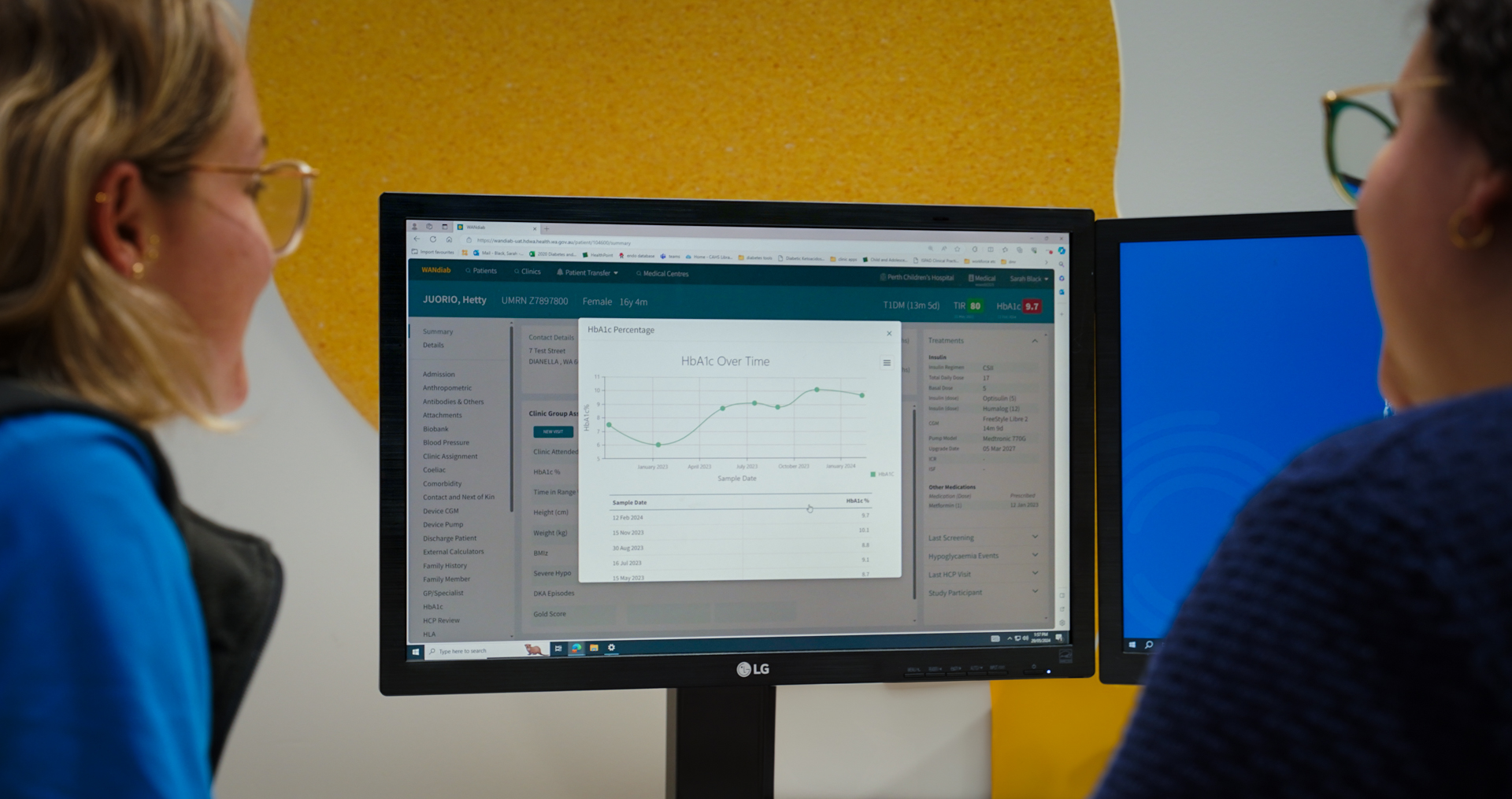Search

News & Events
Congratulations Dr Anna BoggissAnna has been awarded a three-year Fellowship to tackle the urgent gap in care in young Western Australians living with type 1 diabetes who are at heightened risk of developing eating disorders.

News & Events
From Diagnosis to Consumer Representative – Danae’s journey to making a differenceRecognising the signs of type 1 diabetes (T1D) can be tricky. Often put down to growing pains, a virus or “something going around”, a diagnosis can take some time if children aren’t severely sick and attend an emergency department.

News & Events
JDRF Type One SummitThe Rio Tinto Children's Diabetes Centre were invited to attend this year's JDRF Type One Summit in Sydney where the T1D community came together to "share knowledge and gain strength and inspiration from others in the T1D community - JDRF Australia"

News & Events
Major funding to transform diabetes managementCongratulations to Professor Liz Davis and her team at the Rio Tinto Children's Diabetes Centre, who have received significant digital health grants through the Future Health Research and Innovation (FHRI) Fund.

News & Events
WANdiab patient management system upgradeWe've updated our clinical diabetes patient management system to a new state-of-the art system that can access critical informtion in real-time during clinic.
PhD Scholarship opportunities The Rio Tinto Children’s Diabetes Centre; A JDRF Global Centre of Excellence, (“the Centre”) based at The Kids Research

News & Events
Exercise intervention to improve mental health outcomes - Part twoStudy: Developing an exercise intervention to improve mental health outcomes for adolescents with type 1 diabetes Participants needed for an online

News & Events
Congrats Dr Sabrina BinkowskiCongratulations to Dr Sabrina Binkowski from Rio Tinto Children's Diabetes Centre, who was awarded the ANZSPED research grant award of $20,000, at

News & Events
Recruitment for AdDIT now completeYoung people diagnosed with Type 1 Diabetes are at risk of complications from their diabetes including kidney, heart, eye and vascular disease.

News & Events
WA teenager with type 1 diabetes on a mission to become a pro-cyclistA wiry tall teenager, who was struggling somewhat with his blood glucose control, he turned up on his trusty bike, and we had something in common to talk about.
